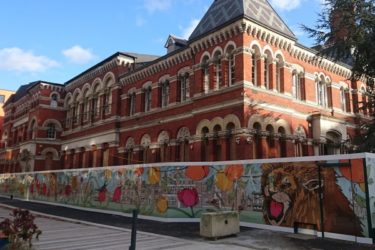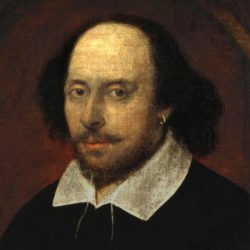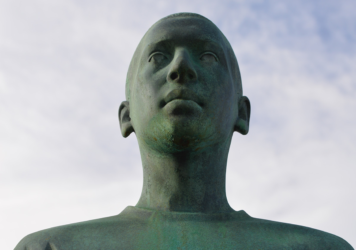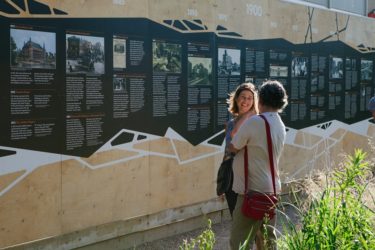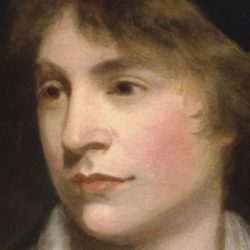The first calculating devices, such as the abacus, date back thousands of years. The ancient Greeks used a tool known as the Antikythera mechanism to predict astronomical movements and by the 19C, astrolabes, slide rules and other instruments were commonly used for navigational calculations.
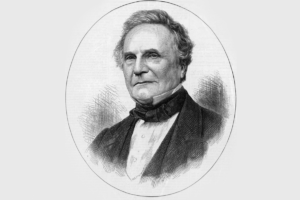
What all these devices have in common is that they are only useful for a single purpose. In contrast, today’s computers can be used for a variety of tasks; handling numbers, certainly, but also for making music, drawing pictures or playing games. They can manipulate anything that can be represented by numbers and can be reprogrammed for different tasks.
The idea for this kind of general-purpose computer originated with Charles Babbage, the 19th century’s answer to Stephen Hawking.
Babbage was born in Walworth in 1791 and was baptised at St Mary’s Newington. He was one of four children born to Benjamin Babbage and Betsy Plumleigh Teape. The family lived at 44 Crosby Row, which is now called Larcom Street. You’ll see a blue plaque for Babbage at the corner of Larcom Street and Walworth Road.
His father was a banker and one of the founding partners of Praed & Co which would later become part of Lloyds. In 1791, Walworth was considered a fitting place for a middle class banker’s family to live. It was a smart commuter suburb, located away from the noise, grime, and hustle of the City of London, but close enough to be an easy commute. In 1808 the family moved to Devon. Within a couple of years, Charles had moved on again, to study at Cambridge University where he excelled, soon surpassing the other mathematicians in his year. He became a Fellow of the Royal Society and a founder member of the Royal Astronomical Society; receiving a Gold Medal for his work on astronomical calculations. By the age of 37, Babbage held the position of Lucasian Professor of Mathematics at Cambridge, an honour he shares with Sir Isaac Newton and Stephen Hawking.
the Analytical Engine was the first design for a Turing-complete computer
In 1832, Babbage published his first book, On the Economy of Machinery and Manufactures. This was an early work of management science and it would influence the thinking of Karl Marx, John Stuart Mill and fellow Southwark local, John Ruskin, amongst others. Babbage was also a key figure in metrology, (the science of measurement). In the early 1830s he began work on a project to compile a list of all physical constants; fundamental, unchanging measurements such as the speed of light. Precise measurement is critical to modern, machine tools, so Babbage is considered to be a pivotal figure in the development of modern engineering and manufacturing.
At this time, calculations were done manually, often using mathematical tables drawn up by hand. Such tables were invaluable to mathematicians but also to astronomers, statisticians, engineers, navigators and other scientists. The trouble was they were prone to human error and often contained mistakes. Babbage’s great insight (perhaps because of his abiding interest in measurement and exact values) was that a machine could do this work faster and more accurately than humans. With this in mind, he designed a mechanical calculating machine that he called the Difference Engine. Supported by a large government grant, he partially finished an initial prototype before embarking on a second, improved design, which was never completed. The original prototype can still be seen, today, in the Science Museum.
One reason for abandoning the project, was the realisation that he could actually do much better and build a more sophisticated, more useful machine (in theory, at least). This advanced machine would do more than simply perform calculations – it could be reprogrammed for different tasks – the hallmark of a modern computer. His new, Analytical Engine would use punch-cards to store programs and to input and output data. Such cards were already used by the weaving industry at the time (to operate mechanical looms) but had never been used to manipulate data.
Unlike a modern computer, the Analytical Engine used gears and cogs, but like all modern PCs, it had integrated memory; could handle branching and looping in programs, and had a unit (called the mill) which could independently act and re-act on data, just as a CPU does today. Unlike the Difference Engine, the new machine was more than just a number cruncher. In fact, it could do more or less anything that could be encoded in numbers. Theoretically, it could be used to compose music or to produce a picture just as a computer can today. This ability is now known as Turing completeness, and the Analytical Engine was the first design for a Turing-complete computer.
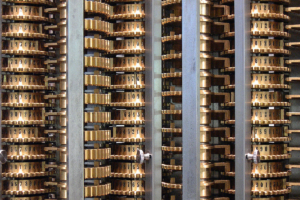
It wasn’t Babbage, however, who first realised the power of his new invention; instead, it fell to his friend and collaborator, Ada Lovelace, to make that leap. Lovelace was the only legitimate child of the “mad, bad, and dangerous to know” poet, Lord Byron. Her mother, Lady Annabella Byron was obsessed with the idea that Ada had inherited her father’s instability and, to counter any tendency to ‘irrationality’, she had Ada tutored by some of the most prominent scientists of the day, including Mary Somerville and Augustus de Morgan.
In 1832, Somerville introduced Lovelace to Babbage, whom she impressed with her mathematical and analytical skills. A decade later, she translated an article about Babbage’s Analytical Engine, written by the Italian mathematician Luigi Menabrea. She appended her own set of notes (which were three times as long as the original article) to explain how the Analytical Engine worked and how it differed from the Difference Engine. She also included detailed instructions for how the machine could be used to calculate a series of Bernoulli numbers. These instructions were the world’s first computer program.
Sadly, the Analytical Engine remained just a concept and would never actually be built.
The Science Museum eventually built a Difference Engine, based on Babbage’s specifications, and there is a campaign to finally realise Lovelace and Babbage’s dream by building a real, mechanical Analytical Engine too.
Today, the pair hold an honoured place in scientific history and they are both featured on new British passports. Their story was recently brought back to public attention when a Canadian cartoonist, Sydney Padua, who thought the failure to build the Analytical Engine was a terrible end to a fascinating tale, decided to rewrite history. In a cartoon produced for Ada Lovelace Day (the second Tuesday in October) Padua laid the foundations for an alternate, steampunk history in which Babbage and Lovelace build the Analytical Engine in Southwark and use it to fight crime!
She published her graphic novel as The Thrilling Adventures of Lovelace and Babbage, and it went on to win several prizes. It’s a great starting point to learning more about the pair’s work and you can find it in Southwark libraries.
